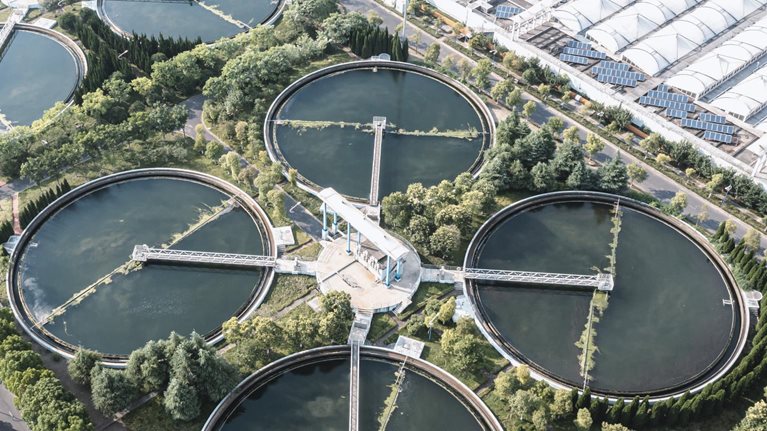Most shipping industry players agree that green corridors—or shipping routes dedicated to vessels that run exclusively on alternative fuels—could be a powerful tool to accelerate the industry’s journey to zero-carbon shipping. Yet many questions remain about how to implement them.
Ascertaining a green corridor’s feasibility is a critical first step. It lays the foundation for a design approach and inspires stakeholder confidence, promoting closer dialogue among all involved parties. This is the work that helps stakeholders reach a memorandum of understanding before execution begins.
McKinsey has collaborated with the Mærsk Mc-Kinney Møller Center for Zero Carbon Shipping to create a blueprint to help stakeholders assess the feasibility of green corridor projects (see sidebar, “Three types of green corridors”). This ready-to-use guide outlines a systematic, step-by-step methodology for stakeholders to analyze the readiness of potential green corridors. The framework is designed to provide an end-to-end perspective on a supply chain’s decarbonization potential with tangible metrics.
While stakeholders can download the full report for a deeper dive, this summary provides an overview of the four priority areas for stakeholders to consider when evaluating the feasibility of green corridors:
- Alternative-fuels supply chain: Will there be a sufficient supply of clean-energy sources for ships?
- Port, storage, and bunkering infrastructure: How will the fuel be transported, stored, and handled?
- Vessel decarbonization pathway: What are the implications for shipowners and operators regarding the investments needed for new vessels and retrofits?
- Cargo demand dynamics: Are cargo owners and end customers willing to support decarbonized shipping?
Stakeholders should consider the feasibility of these areas from three angles: technical, economic, and regulatory. Technical feasibility pertains to the capability gaps and readiness of technological solutions in the implementation of the green corridor. Economic feasibility covers the spreading of financial risks across the value chain, looking at the available financing requirements, and exploring funding sources. Regulatory feasibility weighs the policy constraints and opportunities such as carbon subsidies that affect green corridors.
By analyzing the feasibility of the four priority areas across these three dimensions, potential risks and challenges in the implementation of green corridors should surface. In response, stakeholders could more effectively take mitigation actions to address them and find scalable solutions to move green corridor projects forward.

Bold actions for a net zero future
Alternative-fuels supply chain: Will there be a sufficient supply of clean- energy sources for ships?
As green corridors are set aside exclusively for ships that run only on clean energy, their feasibility naturally depends on the availability of alternative fuels. The green corridor’s fuel demand is estimated and measured against the potential output of expected sources of alternative fuels. These sources include production centers (both existing and planned), as well as the range of import options. If there’s a gap between the projected demand and supply, fuel providers could single out potential locations where capacity could be added to ensure a steady and reliable supply of alternative fuels.
The necessary investments to ramp up capacity need to be financially viable for fuel producers and providers. To ascertain viability, they should quantify the cost of production and transportation of alternative fuels and the cost-down trajectories, considering variables like technology capital expenditures and electricity costs. All financing options and commercial and funding models such as government subsidies and offtake agreements should also be factored into the feasibility assessment.
Port, storage, and bunkering infrastructure: How will the fuel be stored and handled?
Most alternative fuels have specific storage and handling requirements, and sufficient capacity is needed to support green corridors. Port and bunkering operators should calculate the projected capacity required to meet the corridor’s energy needs and ascertain whether there’s enough capacity at both existing and planned port and bunkering sites. If a capacity shortage exists, then port and bunkering operators along the green corridor can assess how much of the shortfall could be made up by retrofitting existing infrastructure and how much additional infrastructure needs to be built.
As operators look to add capacity, they also have to take into account the regulatory frameworks and standards for safe fuel handling and storage at port and bunkering sites. The range of financing options available for retrofits and capacity expansions should also be accounted for.
Vessel decarbonization pathway: What are the implications for shipowners and operators regarding the investments needed for new vessels and retrofits?
Any proposed green corridor should be able to cope with shifts in fleet requirements, including vessel type and size. Shipowners and operators should forecast the timeline of their fleets’ decarbonization pathways, based on a short list of alternative fuels and their corresponding costs of ownership. They will have to quantify the capital expenditure requirements for converting existing and new vessels and review their financial potential.
Once the number of new builds and retrofitted vessels is quantified and planned out, implications for value chain players such as shipyards and engine manufacturers can be analyzed to see if they are able to meet this capacity.
Cargo demand dynamics: Are cargo owners and end customers willing to support decarbonized shipping?
There’s no escaping the fact that decarbonized shipping is more expensive in the near term, but mobilizing customer demands and their willingness to pay can influence how the cost is spread across the value chain. Shippers and cargo owners should assess the sensitivity of their cargoes to fluctuations in transportation costs over time and determine demand elasticity. Potential competing routes and transportation modes could be analyzed to quantify differences in shipping costs relative to the proposed green corridor. Are customers willing to pay a premium for greener shipping, and is this expected to change over time?
There may be levers that could be used to promote customer willingness to pay for decarbonized shipping services. These mechanisms, which should be identified and quantified, include long-term offtake agreements, bundled demand, and green cargo credits.
Making green corridors a reality: Road map and commitments
As is evident in the blueprint, stakeholders across the value chain would need to come together and pull their weight if green corridors are to come to life. This feasibility methodology surfaces the commitments and investment projects that each stakeholder will need to undertake. A sound and consensus-based governance structure may be required to ensure adherence to commitments, while a communications and engagement plan could be developed for both internal and external stakeholders to establish alignment.
As the implementation of green corridors is still in the early stages, this blueprint should be treated as a living document that will be refined over time as the industry gains more knowledge and real-world experience. In the meantime, this feasibility blueprint can serve as a resource for stakeholders as they take the first steps.


